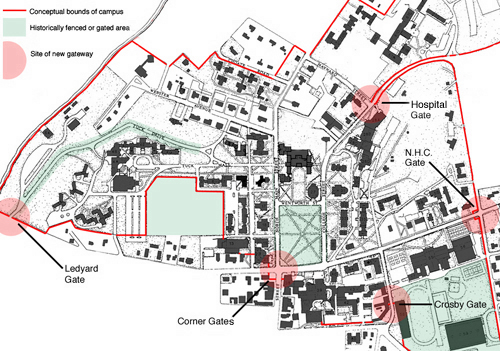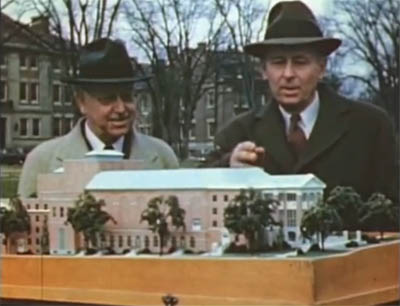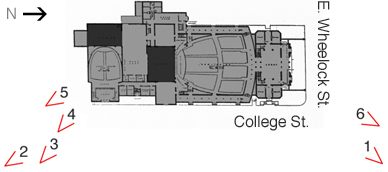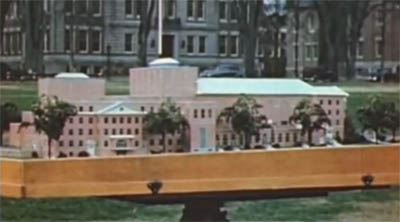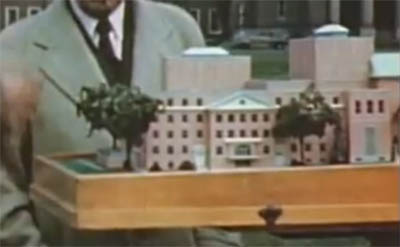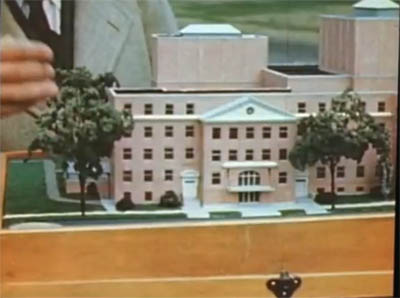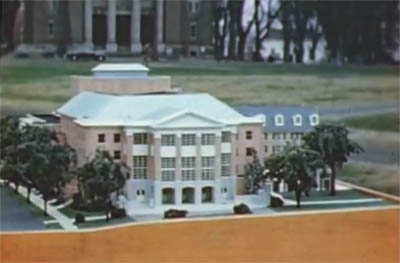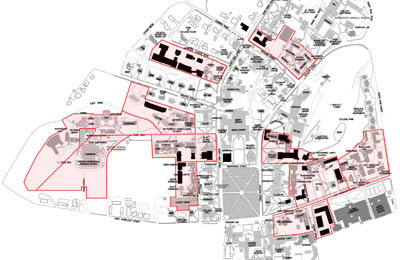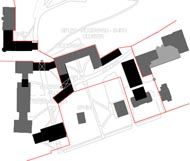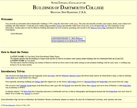Background
Dartmouth’s graduating seniors still hold their annual Class Day event in the Bema and at the Old Pine, in College Park, as they have done since the 1850s or even the 1830s.
Although students do not sing it today, for a number of decades beginning by the late nineteenth century the students sang a well-known hymn called “When Shall We Three Meet Again?” at Class Day or at other events, such as Dartmouth Night. The lyrics involve three people parting around a “youthful pine” and vowing to meet again there in the future, so it must have seemed appropriate.
Around the time it was first sung at a Dartmouth event, or probably before then, the song appears to have become associated with Dartmouth in the popular mind. Most accounts acknowledged that the connection was legendary, but the idea was that three eighteenth-century Indian graduates wrote the song as they parted ways around a memorial pine tree, perhaps the Old Pine itself.
The Lyrics
“A PARTING HYMN, Composed by three Indian friends, (who graduated at Dartmouth College) at a favourite Bower.”[1]
When shall we three meet again?
When shall we three meet again!
Oft shall glowing hope expire —
Oft shall wearied love retire —
Oft shall death and sorrow reign.
Ere we Three shall meet again.
Though in distant lands we sigh,
Parch’d beneath the hostile sky;
Though the deep between us rolls,
Friendship shall unite our souls,
And in Fancy’s wide domain
Oft shall we Three meet again.
When our burnish’d locks are grey,
Thinn’d by many a toil spent day;
When around this youthful Pine,
Moss shall creep and Ivy twine;
Long may this loved Bower remain —
Here may we Three meet again.
When the dreams of life are fled,
When its wasted lamps are dead —
When in cold Oblivion’s shade,
Beauty, wealth and fame are laid —
Where immortal Spirits reign,
There may we all meet again.
The Kashmir Connection
The earliest publications found are from Boston[2] and London,[3] both dating to 1807. Both publications attribute the hymn to “a Casmerian Indian.” U.S. publications continued to attribute the hymn to “a Cashmerian Indian” into the 1820s.[4] The reference to a Casmerian (i.e. Kashmiri) Indian appears to place this particular air within the broader genre of the “Hindoostanee air.”
A Hindoostanee air was a European (especially British or Anglo-Indian) transcription of a traditional Indian song that was sung by dancers in houses or court festivals in India during the late eighteenth and early nineteenth centuries.[5] While those transcribing the music were often British women, the lyrics were typically translated by local translators, often with an eye to authenticity.[6] Hindoostanee airs became part of British popular culture, and Byron wrote a poem called “Stanzas to a Hindoo Air” in 1822.
So that’s it: Dartmouth’s old-time farewell hymn might have been written on the Indian Subcontinent centuries ago and translated for English ears in the early nineteenth century, its “Indian” authorship giving rise to confusion soon after its publication in the U.S.
[1] “Miscellanies: A Parting Hymn,”
The New England Farmer 5:13 (20 October 1826), 104.
[2] [Attr. a Casmerian Indian], “An Original Air,” The Emerald, or, Miscellany of Literature, Containing Sketches of the Manners, Principles and Amusements of the Age 1:10 (26 December 1807), 113.
[3] [Attr. a Casmerian Indian], “An Original Air,” La Belle Assemblée: or, Bell’s Court and Fashionable Magazine, Addressed Particularly to the Ladies 3:[1] (July 1807), 47.
[4] See [attr. a Cashmerian Indian], “When Shall We Three Meet Again?”, Christian Register 3:18 (12 December 1823), 72; [attr. a Cashmerian Indian], “When Shall We Three Meet Again?”, The New-England Galaxy and United States Literary Advertiser (5 December 1823), 6, no. 321. Some 1820s publications asserted that the “Cashmerian” attribution must be incorrect because the lines must be of American origin. “An Elegant Morceau,” The National Recorder 3:23 (3 June 1820), 366. Other early publications credited the hymn to “a lady” or “a lady at thirteen years of age.”
[5] Ian Woodfield, Music of the Raj: A Social and Economic History of Music in Late Eighteenth-Century Anglo-Indian Society (New York: Oxford University Press, 2001), 157-158.
[6] Nicholas Cook, “Encountering the Other, Redefining the Self: Hindostannie Airs, Haydn’s Folksong Settings and the ‘Common Practice’ Style,” in Martin Clayton and Bennett Zon, eds., Music and Orientalism in the British Empire, 1780s-1840s: Portrayal of the East (Aldershot, U.K.: Ashgate Publishing Limited, 2007), 13-14.


